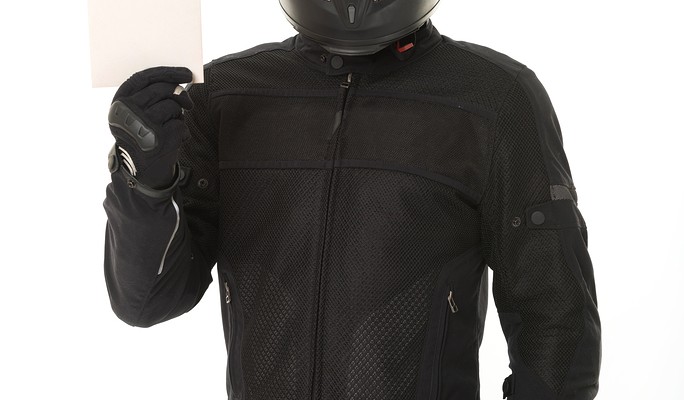
Motorcycle Hibernation Tips
December 1, 2014
It’s that time of year again. Christmas lights go up, snow falls down, and motorcycles go into hibernation until the frost thaws next spring. It’s motorcycle hibernation season, and riders will need to follow these motorcycle hibernation tips to ensure their ride is ready to roll when the weather warms up again.
FLUIDS
Top off the tank and add the recommended amount of a fuel stabilizer such as Sta-Bil. This additive will keep your gas from breaking down and leaving a gunky brown “varnish” on your carb’s parts. Then start the engine and run it for several minutes to make sure you get the treated gas into the carbs.
Oil starts out golden and clean, and winds up black and dirty. This is bad. The contaminants in the oil can be corrosive, and you don’t want your engine parts sitting in a corrosive bath all winter. So do yourself a favor and change your oil just before the bike goes into storage.
Since most motorcycles don’t get a lot of use in sub-freezing temperatures, many riders overlook the importance of checking their coolant for protection against winter freeze-up. Use one of those floating-ball testers to make sure your coolant will resist freezing in the temperatures you experience. If you need to add any, make sure you use the type of coolant recommended by your manufacturer.
BATTERY
Some modern motorcycles can put a slight drain on a battery to run a clock, maintain radio presets or operate an alarm system. If you’re in this situation, make sure you have a charger system in place to keep your battery alive. Otherwise, at least make sure it starts the winter with a full charge, and give it a recharge every month or so.
TIRES
Purists will tell you to store your bike with the tires off the ground. This is a great idea, if you can arrange it. If not, inflate both tires properly, put the bike on its centerstand, and every few weeks rotate the front tire to avoid flat spots.
SHINE
Also, a good coating of wax will help preserve your paint and chrome, and a breathable cloth cover can keep off dirt, dust and other garage effluvia.
Do it right, and all you’ll have to do come spring is turn the key, press the starter button and start racking up the miles again.

Blame Evolution for Texting While Driving
November 7, 2014
Everyone admits we have a problem with texting while driving. Lawmakers admit it, passing no-texting legislation across the nation. Parents and teenagers alike admit to texting while driving, despite all its dangers. Even cell phone companies admit it. Cell phone companies.
So why do we continue to do it? Even those of us that know it’s dangerous will instinctively check our phone at the slightest buzz. Even those of us that live in cities that have banned texting while driving can’t resist the ping of a new message. Is it an addiction? Paul Watters, head of motoring policy for the AA [a motoring organization in the U.K.], seems to think so:
“What we find in our research is that there’s an addiction here, to texting and using smartphones, it’s an addiction that is very hard to break even when in the car.”
However, texting while driving may be more than just an addiction. In fact, it could be the result of billions of years of evolution.
Think about it. You’re walking through the woods at the dawn of man. Suddenly, you hear a stick break behind you. Is it a saber-tooth tiger? Is it a deer? Or could it be another human… possibly a fertile mate with a high-class hut and dinner on the campfire? If you don’t look, then you’ll never know. Your evolutionary ancestors were able to eat, reproduce and survive because they looked when they heard a stick crack in the woods.
Today, the sound of a text message is our stick cracking in the woods. What could that sound be? A party? A date? A job opportunity? Mom telling you that dinner is ready? The biological urges that drove us to turn our heads in the woods billions of years ago are the same urges that drive us into distracting driving in 2014.
So where does that leave us? If the cause of texting while driving is an unconcious, biological result of billions of years of evolutionary influence, then what can we do about it? The solution is simple: Evolve.
In a world where everyone is constantly connected by their cell phones, modern man has to evolve into a species that doesn’t turn its head willy-nilly. A stick breaking in the woods or a cell phone beeping with a text are meaningless when your survival depends on driving a vehicle at 55 mph.
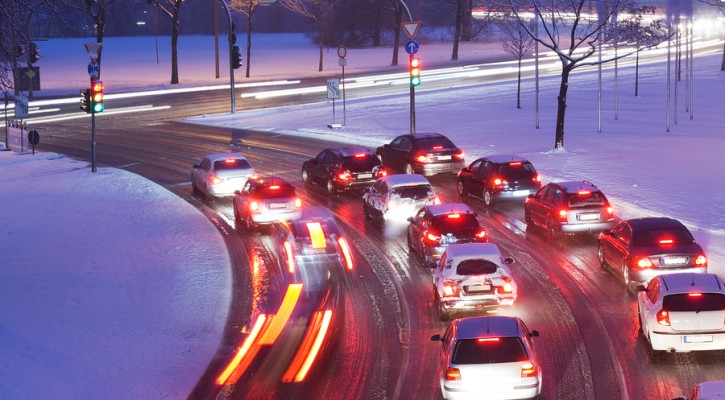
So Long Daylight, Hello Headlights.
November 4, 2014
Now that Halloween has come and gone, and Day Light Savings Time has rolled around, it’s time to say goodbye to long-lasting daylight hours. With a 5 o’ clock sunset, many drivers will still be on the road long after the sun goes down. That makes this week the perfect time to brush up on laws regarding headlights.
When it comes to headlights, there is little variation from state to state. That makes it easier for drivers across the nation to learn and follow local headlight laws. Here are a few laws to remember:
- Vehicle must have two functioning headlights
- Headlights must be turned on when it becomes dark outside
- Headlights must be turned on when visibility is low (such as in stormy or foggy weather)
- High beam headlights can be used to improve driving visibility, but must be turned off for oncoming traffic
- High beam headlights shouldn’t be used when following another car
- Some states require headlights to be turned on 30 minutes after sunset until 30 minutes before sunrise
To learn your state’s local headlight laws, review the state vehicle code or check your state’s driver handbook. Stay up-to-date on the laws of the road, and you’ll have a safe, ticket-free drive this season.

Scary Costumes. Safe Drivers.
October 30, 2014
Halloween is scary for many reasons. There are ghouls, ghosts and goblins running amok. There are haunted houses and frightening decorations. There is madness and mayhem. There is witchcraft. There are clowns.
However, one thing that shouldn’t be scary this Halloween is your driving. Of all the days to practice safe driving, Halloween may be the most important. The streets will be filled with kids trick or treating in the evening, followed by parades of party-goers enjoying a costumed night of wicked revelry.
Let your friends and neighbors enjoy the Halloween festivities by practicing safe driving this weekend. The more safe drivers on the road, and the fewer dangerous and/or intoxicated drivers, the more fun everyone will have.
Here are some tips for safe drivers to follow this Halloween:
- Drive slow. Kids will be spontaneously jetting out into the street all over town.
- Watch for children running out into the road from between parked cars.
- Expect pedestrians on the road, in the medians and on the curbs and sidewalks.
- Enter and exit driveways with extreme caution.
- Keep an eye out for the dark clothing that makes up most Halloween costumes, especially after the sun goes down.
- Avoid all distractions – especially cell phone use.
- Don’t get too distracted by outlandish costumes and decorations. If it’s that interesting, pull over to marvel.
Now put on your freaky costumes, #drivesafe and have fun!
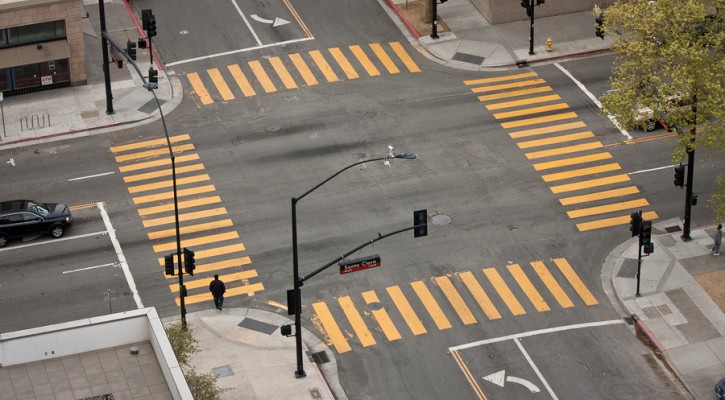
Dangers of the Intersection
October 15, 2014
It turns out, the most dangerous place to drive is closer to home than you might think. Rather than winding cliff-faced roads or high-speed highways, more collisions and deaths occur each year at this little-known, under-appreciated location: the common intersection.
In fact, more than 2 million collisions will occur at intersections this year. That’s close to 40% of all traffic accidents in the U.S., which is a substantial slice of the car crash pie.
The Deadliest Place in Town?
Intersections are a deadly place to be. More than 6,500 people die in intersection collisions annually, killing drivers, passengers, cyclists and pedestrians all across the country. Whether it’s an urban stoplight or a 4-way stop in the suburbs, the intersection is no place to let your guard down. Every single intersection can be considered the deadliest place in town.
Why? Why are intersections such a hazard? The National Safety Council attributes the majority of collisions to the following circumstances:
- Failing to scan intersections properly on approach
- Following other vehicles too closely
- Signaling improperly
- Misjudging the speed and distance of other vehicles
- Turning improperly
- Driving aggressively, including speeding and running red lights
What You Can Do
Although many drivers will fail to practice safe driving as they pass through intersections, those that read this drivers blog will be able to affect some change.
First of all, you can drive in an attentive, defensive mode. In other words, drive as if everyone else is out to get you! Expect other drivers to speed up through yellow lights, run red lights, tailgate, switch lanes erratically, etc. Stay alert and don’t get caught off guard.
You can also teach your friends and family to do the same. By driving smart, you are already being a good influence. You are teaching by doing. You can also point out the dangers of those who speed, tailgate, fail to signal and make other common mistakes. Or, discuss what to watch out for and the best way to deal with each situation.
It’s a dangerous world out there, especially for new drivers. So stay alert and drive safe no matter where you are, and take extra caution when approaching an intersection.
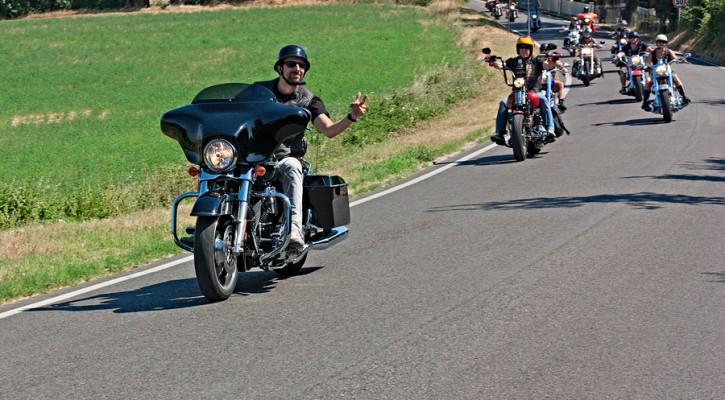
The Motorcycle Wave
October 9, 2014
The motorcycle wave is a universal greeting. It’s a way to show solidarity and respect to other riders, usually complete strangers. It’s a way to acknowledge that you’re both enjoying the same lifestyle, braving the elements on two wheels and enjoying the open road. However, there is a right way and a wrong way to throw “the wave”.
Do throw “the wave” if:
– You feel a sense of community with another rider as you pass by.
– You are in a safe situation.
– You have complete control of your bike.
Do NOT throw “the wave” if:
– You’re a novice rider… it’s best to keep your hands on the controls until you gain some experience.
– You’re in stop-and-go traffic… you will need both hands to brake and accelerate when necessary.
– You’re on a tricky road… hills, turns and speed changes will require both concentration and the use of both of your hands.
– You’re at an intersection… not only will you need to pay attention and keep your hands on the controls, but so will other riders.
– At a biker rally or other motorcycle meet… seriously, the logistics of waving to everyone you see just isn’t possible.
It’s pretty intuitive when you think about it. However, you’d be surprised how many new riders try to throw “the wave” only to lose control and come dangerously close to a terrible wreck. So, use your brains out there and, as always, #ridesafe!
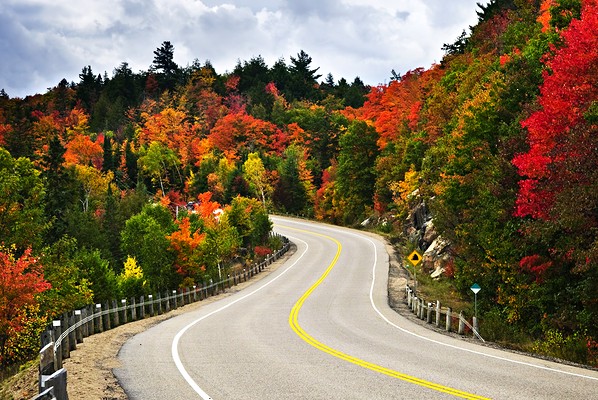
Fall Driving With Murphy’s Law
October 7, 2014
Anything that can go wrong will go wrong. – Murphy’s Law
The universe can be especially cruel in the fall driving season. Hot and cold air mix to create high wind, heavy rain and other unpredictable weather patterns. Well-worn vehicles that muscled through summer travels start to show wear and tear. Traffic patterns change through school sports seasons, harvest times and holidays. And, in the middle of it all, something is bound to wrong.
Be prepared to face Murphy’s Law this fall season by following these smart driver tips:
Tune Up
The long summer season can be rough on any vehicle, so now is the perfect time to tune it up. Get a an oil change and ask your trusted mechanic to make sure everything is in good order. Or, if you’re a penny-pinching do-it-yourselfer, then be sure to check your fluids, brakes, tires, and lights.
Don’t fall victim to a roadside breakdown by neglecting your vehicle’s essential needs. Since every ride is different, it’s best to consult the owner’s manual to stay up to date on scheduled maintenance.
And, if you’ve been ignoring your check engine light for a while, then now might be a good time for a diagnostic test.
Prepare for Rain and Fog
Expect to face the rain this fall season. El Nino is kicking in, and the showers are bound to hit you no matter what region you live in. So be prepared for slick roads, slower traffic, low visibility and possibly dangerous conditions. Watch out for inexperienced or careless drivers, and set a good example by following our tips for driving during this especially wet season:
Don’t let the fog catch you off guard, either. Keep your windshield and headlights clean to improve visibility, and drive carefully.
Mind the Leaves
Autumn leaves are known for their beauty, but they’ve also been known to be a menace on the road. As the leaves change colors and fall to the ground, they obscure traffic lines, cover potholes and hide other road hazards. They also get slick quick when rain and morning dew wet the asphalt.
With falling leaves come seasonal leaf-peepers. Sightseers drive across the country to marvel at scenic autumn drives. This can lead to slow, distracted drivers navigating unfamiliar territory, so be prepared to deal with these out-of-towners.
Take Your Time
The best way to prepare for the worst is to give yourself plenty of time to deal with anything that comes your way. A traffic jam, detour, road hazard or other delay is no big deal if you leave the house early. Give yourself plenty of time for any excursion.
Antique Motorcycles Ride Across America
October 3, 2014
Imagine, for a moment, taking a 4,000 mile trip through the back roads of America. Imagine taking that trip on a motorcycle. And, imagine that your motorcycle is nearly a century old. Imagine over 100 other riders on motorcycles built before 1937, cruising with you down the most scenic highways in the U.S., covering 300 miles per day, and pushing those antique motorcycles to their limits all the way from Daytona to Tacoma.
Instill this scene in your mind.
Now, stop imagining and check out this awesome video from the actual trip:
2014 Motorcycle Cannonball
This is a real event, that really happened, and man it is as real as it gets. Of the 105 riders that left Daytona, only 84 made it to Washington on September 21. Following the motorcyclists was the “school bus of shame”, picking up fallen riders and broken down antique motorcycles.
This epic journey was a true endurance test, a testament to man and machine, and a simply amazing time and place to ride and be alive. You can read all about the adventure on the Motorcycle Cannonball website here:
What Are Roads Worth to You?
October 2, 2014
This infographic illustrates why it’s important to invest in our nation’s roadways. When our taxes go to building and maintaining roads, the money comes back around in car maintenance savings. Plus, if your time is worth money then decreased traffic could increase income!
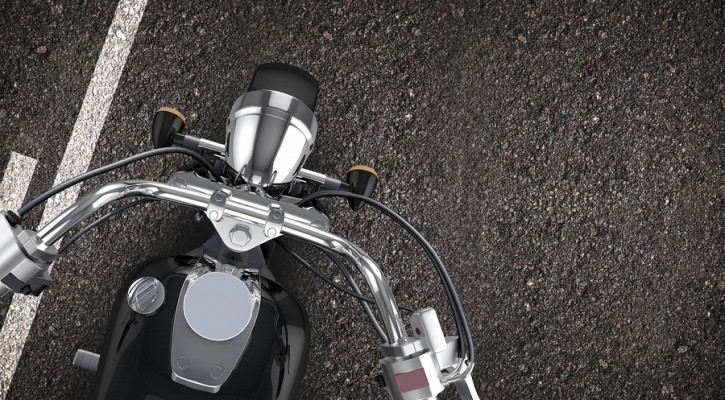
AMA Tracks 2014 Traffic Laws
September 29, 2014
The AMA (American Motorcyclist Association) is tracking this year’s legislation for you. Thousands of new laws have been proposed, passed, opposed and postponed, making it difficult for riders to keep track of new motorcycle and traffic laws in their state. However, the AMA keeps a watchful eye on legislation that has to do with the motorcycle community, so you can find the full breakdown on their blog:
